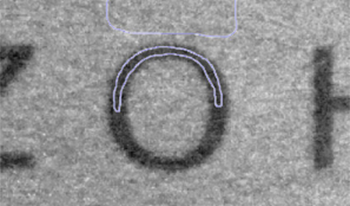References
1AllisonR. S.GillamB. J.VecellioE.2009Binocular depth discrimination and estimation beyond interaction spaceJ. Vis.91010.1167/9.1.10
2BaileyI. L.Lovie-KitchinJ. E.2013Visual acuity testing. From the laboratory to the clinicVis. Res.90210.1016/j.visres.2013.05.004
3Blanc-GoldhammerD. R.MacKenzieK. J.2018The effects of natural scene statistics on text readability in additive displaysProc. Human Factors and Ergonomics Society Annual Meeting128112851281–5SAGE PublicationsSage, CA
4BurrD. C.MorroneM. C.RossJ.1994Selective suppression of the magnocellular visual pathway during saccadic eye movementsNature37151110.1038/371511a0
5Callahan-FlintoftC.HolcombeA. O.WybleB.2020A delay in sampling information from temporally autocorrelated visual stimuliNature Commun.111111–1110.1038/s41467-020-15675-1
6CarkeetA.ListerL. J.2018Computer monitor pixelation and Sloan letter visual acuity measurementOphthalmic Physiol. Opt.3814410.1111/opo.12434
7CarneyT.KleinS. A.TylerC. W.SilversteinA. D.BeutterB.LeviD.WatsonA. B.ReevesA. J.NorciaA. M.ChenC.-C.Development of an image/threshold database for designing and testing human vision modelsHuman Vision and Electronic Imaging IV1999International Society for Optics and PhotonicsBellingham, WA542551542–51
8ChenC.-C.TylerC. W.2002Lateral modulation of contrast discrimination: Flanker orientation effectsJ. Vis.2810.1167/2.6.8
9CornelisK.PollefeysM.VergauwenM.Van GoolL.2000Augmented reality using uncalibrated video sequencesEuropean Workshop on 3D Structure from Multiple Images of Large-Scale Environments144160144–60SpringerNew York, NY
10DumbletonK.GuillonM.TheodoratosP.WooleyC. B.MoodyK.2018The effects of age and refraction on pupil size and visual acuity: Implications for multifocal contact lens design and fittingContact Lens and Anterior Eye41S2310.1016/j.clae.2018.04.153
11EdstromJ.ChenD.WangJ.GuH.VazquezE. A.McCourtM. E.GongN.Luminance-adaptive smart video storage system2016 IEEE Int’l. Symposium on Circuits and Systems (ISCAS)2016IEEEPiscataway, NJ734737734–7
12ElliottD. B.2016The good (logMAR), the bad (Snellen) and the ugly (BCVA, number of letters read) of visual acuity measurementOphthalmic Physiol. Opt.3635510.1111/opo.12310
13FreemanJ.SimoncelliE. P.2011Metamers of the ventral streamNat. Neurosci.14119510.1038/nn.2889
14GilchristA.KossyfidisC.BonatoF.AgostiniT.CataliottiJ.LiX.SpeharB.AnnanV.EconomouE.1999An anchoring theory of lightness perceptionPsychol. Rev.10679510.1037/0033-295X.106.4.795
15GrahamD. J.2011Visual perception: Lightness in a high-dynamic-range worldCurrent Biol.21R91410.1016/j.cub.2011.10.003
16GutsteinW.SinclairS. H.PrestiP.NorthR. V.2015Interactive thresholding of central acuity under contrast and luminance conditions mimicking real world environments: 1, evaluation against LogMAR chartsJ. Comput. Sci. Syst. Biol.822510.4172/jcsb.1000210
17HarrisonA.GreenM.HungC.RaglinA.ioM-HDR: A High Dynamic Range adapted model of visual salienceSBP-BRiMS: Int’l. Conf. on Social Computing, Behavioral-Cultural Modeling and Prediction and Behavior Representation in Modeling and Simulation2019SpringerWashington, DC171–7
18HungC. P.CuiD.ChenY.-p.LinC.-p.LevineM.
19HungC. P.Callahan-FlintoftC.FedeleP. D.FluittK. F.OdoemeneO.WalkerA. J.HarrisonA. V.VaughanB. D.JaswaM. S.WeiM.
20HungC. P.Callahan-FlintoftC.FedeleP. D.FluittK. F.OdoemeneO.WalkerA. J.HarrisonA. V.VaughanB. D.JaswaM. S.WeiM.2020Abrupt darkening under high dynamic range (HDR) luminance invokes facilitation for high contrast targets and grouping by luminance similarityJ. Vis.20910.1167/jov.20.7.9
21HungC. P.Callahan-FlintoftC.WalkerA. J.FedeleP. D.FluittK. F.OdoemeneO.HarrisonA. V.VaughanB. D.JaswaM. S.WeiM.2020A 100,000-to-1 high dynamic range (HDR) luminance display for investigating visual perception under real-world luminance dynamicsJ. Neurosci. Methods33810868410.1016/j.jneumeth.2020.108684
22HungC. P.LarkinG. B.GeussM. N.Callahan-FlintoftC.FedeleP. D.FluittK. F.VaughanB.WeiM.2020Divisive display augmented reality (ddAR) for real-world warfighter performanceSPIE Defense + Commercial Sensing, sub-conference Virtual, Augmented, and Mixed Reality (XR) Technology for Multi-Domain Operations 11426-191131–13
23HungC. P.RamsdenB. M.RoeA. W.2007A functional circuitry for edge-induced brightness perceptionNat. Neurosci.10118510.1038/nn1948
24HungC. P.RamsdenB. M.RoeA. W.Inherent Biases in Spontaneous Cortical Dynamics2010Oxford University PressOxford
25IttiL.KochC.NieburE.1998A model of saliency-based visual attention for rapid scene analysisIEEE T Pattern Anal.20125410.1109/34.730558
26JiangX.BollichA.CoxP.HyderE.JamesJ.GowaniS. A.HadjikhaniN.BlanzV.ManoachD. S.BartonJ. J. S.GaillardW. D.RiesenhuberM.2013A quantitative link between face discrimination deficits and neuronal selectivity for faces in autismNeuroImage: Clin.232010.1016/j.nicl.2013.02.002
27KeezerM. R.PelletierA.StechysinB.VeilleuxM.JettéN.WolfsonC.2014The diagnostic test accuracy of a screening questionnaire and algorithm in the identification of adults with epilepsyEpilepsia55176310.1111/epi.12805
28KleinerM.BrainardD.PelliD.2007What’s new in Psychtoolbox-3?Perception 36 ECVP Abstract Supplement
29KoenderinkJ. J.BoumanM. A.de MesquitaA. E. B.SlappendelS.1978Perimetry of contrast detection thresholds of moving spatial sine wave patterns. II. The far peripheral visual field (eccentricity –)J. Opt. Soc. Am.6885010.1364/JOSA.68.000850
30KotheC.
31LarkinG. B.GeussM.YuA.RexwinkleJ.Callahan-FlintoftC.BakdashJ.SwobodaJ.LiebermanG.HungC.MooreS.
32LarkinG. B.GeussM.YuA.RexwinkleJ.Callahan-FlintoftC.BakdashJ. Z.SwobodaJ.LiebermanG.HungC. P.MooreS.LanceB.2020Augmented target recognition display recommendationsDSIAC J.728
33LeggeG. E.RubinG. S.LuebkerA.1987Psychophysics of reading—V. The role of contrast in normal visionVis. Res.27116510.1016/0042-6989(87)90028-9
34
35McDermottK. C.MalkocG.MulliganJ. B.WebsterM. A.2010Adaptation and visual salienceJ. Vis.101710.1167/10.13.17
36MoranJ.DesimoneR.1985Selective attention gates visual processing in the extrastriate cortexScience22978210.1126/science.4023713
37MüllerS.HeerenT. F.BonelliR.FruttigerM.IssaP. C.EganC. A.HolzF. G.2019Contrast sensitivity and visual acuity under low light conditions in macular telangiectasia type 2Br. J. Ophthalmology10339810.1136/bjophthalmol-2017-311785
38NakamuraK.ColbyC. L.2002Updating of the visual representation in monkey striate and extrastriate cortex during saccadesProc. Natl. Acad. Sci. USA99402610.1073/pnas.052379899
39NormarkC. J.GärlingA.
40PluháčekF.SiderovJ.2018Mesopic visual acuity is less crowdedGraefe’s Archive for Clinical and Experimental Ophthalmology256173910.1007/s00417-018-4017-6
41RadonjicA.AllredS. R.GilchristA. L.BrainardD. H.2011The dynamic range of human lightness perceptionCurr. Biol.21193110.1016/j.cub.2011.10.013
42RadonjicA.BroussardC.BrainardD.
43RovamoJ.MustonenJ.NäsänenR.1995Neural modulation transfer function of the human visual system at various eccentricitiesVis. Res.3576710.1016/0042-6989(94)00171-H
44ScharffL. F.AhumadaA. J.2002Predicting the readability of transparent textJ. Vis.2710.1167/2.9.7
45SolomonJ. A.PelliD. G.1994The visual filter mediating letter identificationNature36939510.1038/369395a0
46StewartC. E.HusseyA.DaviesN.MoseleyM. J.2006Comparison of logMAR ETDRS chart and a new computerised staircased procedure for assessment of the visual acuity of childrenOphthalmic Physiol. Opt.2659710.1111/j.1475-1313.2006.00407.x
47ThompsonW. B.LeggeG. E.KerstenD. J.ShakespeareR. A.LeiQ.2017Simulating visibility under reduced acuity and contrast sensitivityJ. Opt. Soc. Am. A3458310.1364/JOSAA.34.000583
48TreismanA. M.GeladeG.1980A feature-integration theory of attentionCogn Psychol.129710.1016/0010-0285(80)90005-5
49TylerC. W.HamerR. D.1990Analysis of visual modulation sensitivity. IV. Validity of the Ferry–Porter lawJ. Opt. Soc. Am. A774310.1364/JOSAA.7.000743
50VaughanB. D.
51VirsuV.RovamoJ.LaurinenP.NäsänenR.1982Temporal contrast sensitivity and cortical magnificationVis. Res.22121110.1016/0042-6989(82)90087-6
52WatsonA. B.2018The field of view, the field of resolution, and the field of contrast sensitivityJ. Perceptual Imaging11050510.2352/J.Percept.Imaging.2018.1.1.010505
53WatsonA. B.AhumadaA. J.2016The pyramid of visibilityElectron. Imaging20161
54WilkeM.LogothetisN. K.LeopoldD. A.2003Generalized flash suppression of salient visual targetsNeuron39104310.1016/j.neuron.2003.08.003
55XiaoF.DiCarloJ. M.CatrysseP. B.WandellB. A.2002High dynamic range imaging of natural scenesProc. IS&T/SID CIC10: Tenth Color Imaging Conf.337342337–42IS&TSpringfield, VA
56YazdanieM.AlvarezJ.AgrónE.WongW. T.WileyH. E.Ferris IIIF. L.ChewE. Y.CukrasC.2017Decreased visual function scores on a low luminance questionnaire is associated with impaired dark adaptationOphthalmology124133210.1016/j.ophtha.2017.05.005

 Find this author on Google Scholar
Find this author on Google Scholar Find this author on PubMed
Find this author on PubMed